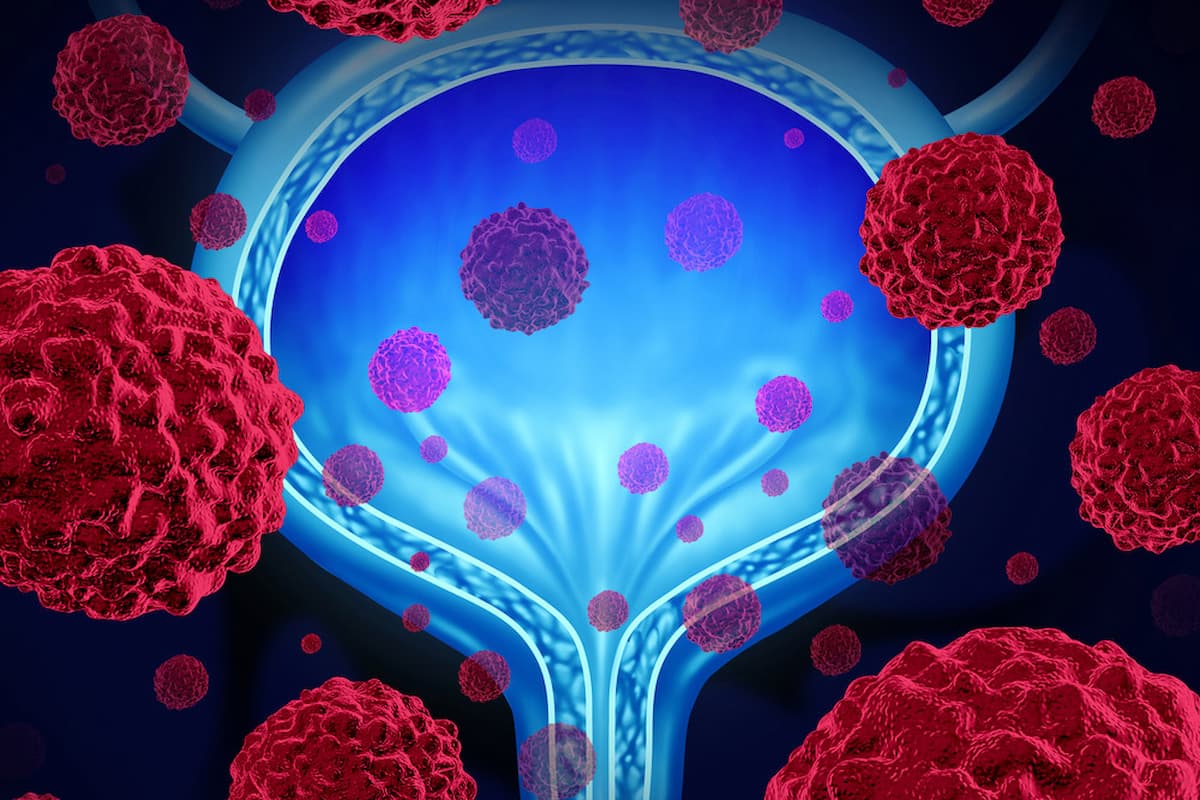sBLAs Submitted for Nogapendekin Alfa Inbakicept in Lymphopenia/NMIBC
In quarter 1 of 2025, nogapendekin alfa inbakicept received regenerative medicine advanced therapy designation for lymphopenia.
Data submitted to the FDA revealed that 88% and 82% of patients with BCG-unresponsive NMIBC papillary disease treated with nogapendekin alfa inbakicept avoided the surgical removal of the bladder at 2 and 3 years, respectively.

A supplemental biologics license application (sBLA) was submitted to the FDA fornogapendekin alfa inbakicept-pmln (Anktiva) in combination with Bacillus Calmette-Guérin (BCG) in patients with BCG-unresponsive non-muscle invasive bladder cancer (NMIBC). The sBLA indicated this treatment for those who have papillary disease, and an expanded access protocol (EAP) for lymphopenia, according to a news release from the drug’s developer, ImmunityBio, Inc.1
Data submitted to the FDA revealed that 88% and 82% of patients with BCG-unresponsive NMIBC papillary disease treated with nogapendekin alfa inbakicept avoided the surgical removal of the bladder at 2 and 3 years, respectively.
Additionally, results from the phase 2/3 QUILT-3.032 trial (NCT03022825) published in the New England Journal of Medicine Evidence evaluating intravesical BCG in combination with nogapendekin alfa inbakicept among 72 patients with BCG-unresponsive high-grade NMIBC.
In cohort B, the median disease-free survival (DFS) was 19.3 months (95% CI, 7.4-not reached [NR]).2 Furthermore, the 12-, 18-, and 24-month DFS rates were 55.4% (95% CI, 42.0%-66.8%), 51.1% (95% CI, 37.6%-63.1%), and 48.3% (95% CI, 34.5%-60.7%), respectively.
Furthermore, at a median follow-up of 20.7 months (range, 2.9-37.1), the 12-, 18-, and 24-month progression-free survival (PFS) rates were 97.1% (95% CI, 88.8%-99.3%), 94.8% (95% CI, 84.3%-98.3%), and 88.8% (95% CI, 74.1%-95.4%), respectively. The respective OS rates were 98.6% (95% CI, 90.2%-99.8%), 94.3% (95% CI, 82.9%-98.1%), and 91.7% (95% CI, 79.0%-96.9%), at 12, 18, and 24 months. Additionally, the 12- and 24-month disease-specific survival rates were 100% and 97.7% (95% CI, 84.6%-99.7%), respectively, with a cystectomy rate of 7%.
The EAP for nogapendekin alfa inbakicept for the treatment of lymphopenia follows a previous action by the Agency for Regenerative Medicine Advanced Therapy (RMAT) to authorize its designation for the indication. The authorization of the EAP would enable early access to patients and physicians seeking the use of nogapendekin alfa inbakicept plus standards of care. No treatment currently exists to cure cancer-induced lymphopenia.
The phase 2/3 QUILT-3.032 trial enrolled patients into 1 of 3 study cohorts: cohort A enrolled patients with intravesical nogapendekin alfa inbakicept plus BCG; cohort B enrolled patients with BCG-unresponsive high-grade Ta/T1 papillary NMIBC; and cohort C enrolled patients with BCG-unresponsive carcinoma in situ (CIS) with or without Ta/T1 papillary disease.
The primary end point for cohorts A and C were 3- and 6-month CR incidences based on investigator assessment; for cohort B it was 12-month DFS rate. A secondary end point of cohorts A and C were responses assessed by blinded independent pathology review. Additionally, safety was assessed by the incidence and severity of treatment-emergent adverse effects (TEAEs) and were reported regardless of assumed causality.
The most frequent TEAEs in cohorts A and B (n = 161), who were treated with the combination regimen, included dysuria, pollakiuria, and hematuria. The incidence of TEAEs by increasing grades were 86% for grades 1-2, 20% for grade 3, 2% for grade 4, and 1% for grade 5 TEAEs. Furthermore, the most frequent grade 3 TEAEs included hematuria (2%) and urinary tract infection (2%), as well as a single instance of a grade 5 TEAE comprising cardiac arrest leading to death.
References
- ImmunityBio announces FDA submissions of supplemental BLA for NMIBC papillary disease and for expanded access of ANKTIVA® to treat lymphopenia. News release. April 15, 2025. Accessed April 16, 2025. https://tinyurl.com/4atzxwjv
- Chamie K, Chang SS, Kramolowsky E, et al. IL-15 superagonist NAI in BCG-unresponsive non–muscle-invasive bladder cancer. N Engl J Med Evid. 2023;2(1). doi:10.1056/EVIDoa2200167
Newsletter
Stay up to date on recent advances in the multidisciplinary approach to cancer.